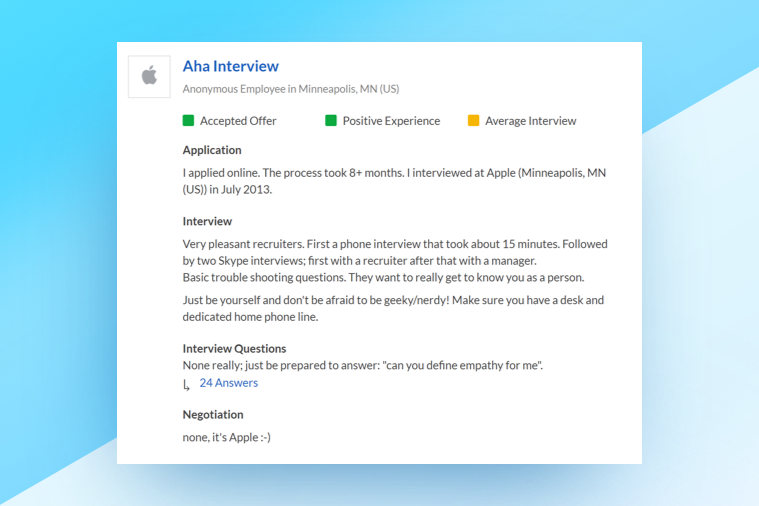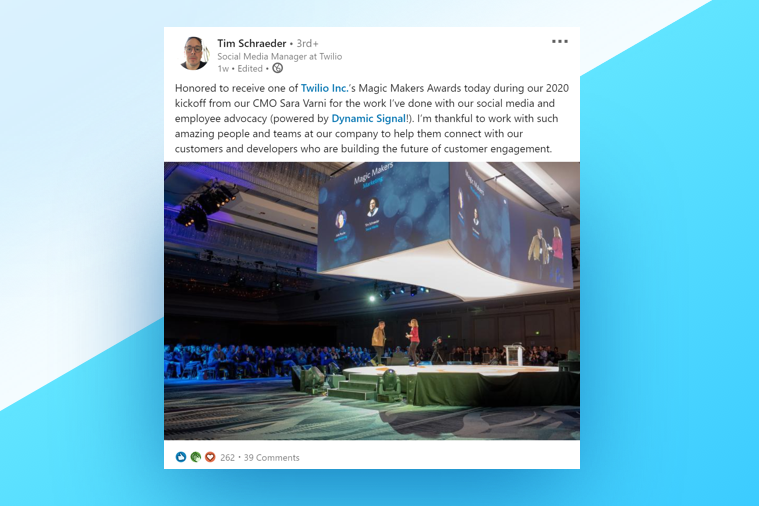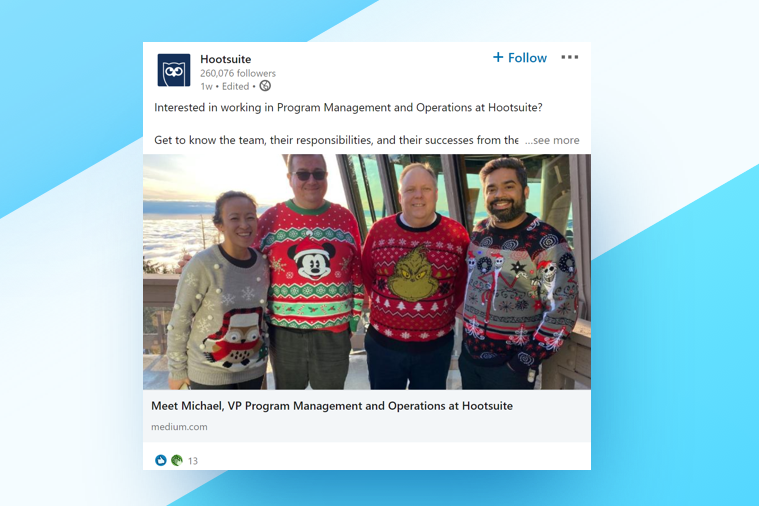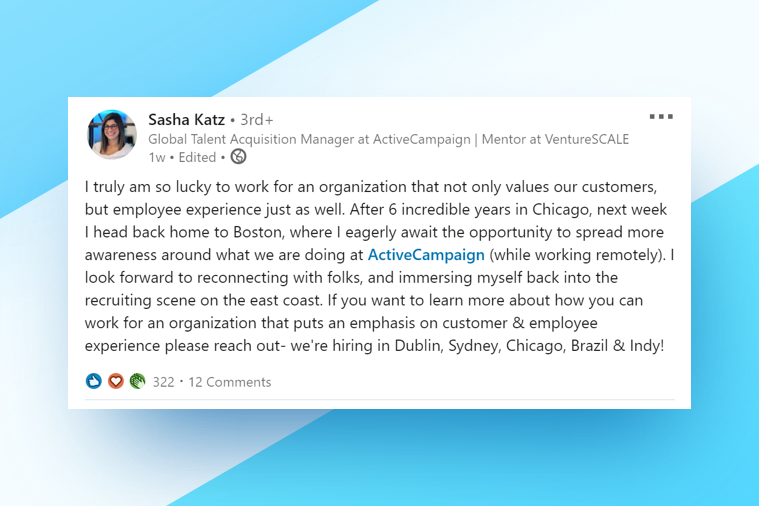To attract the top talent to your company, you need great employer branding. According to the latest surveys, 75 percent of job seekers say they consider an employer’s brand before applying for a job. This means they read employee testimonials, check out a company’s social media pages, and learn about the organizational culture before sending in their applications. Hence, promoting your employer branding on social media is a must for every company.
It’s been working well for employers, too, as companies with a strong employer brand see a 43 percent decrease in the cost per newly hired employee on average.
It means that potential candidates are increasingly paying attention to the content companies put out there because they perceive it as a good way to know a good employer.
If done well, employer branding can do wonders for your talent acquisition efforts. But, you need to be consistent and strategic in promoting your employer brand.
6 Killer Steps to Build and Promote Your Employer Branding on Social Media
Here are 6 steps on how to build your employer branding on social media. Leverage your social media presence thoughtfully so that it reduces recruiting costs-per-employee and improves your business’s overall bottom line.
Step #1. Start with an Employer Branding Audit
The best thing to do to start building an employer brand is to check where you are. This includes:
Analyze your brand’s image and reputation
The first step towards building your employer branding on social media is knowing where your company stands in the labor market and how potential employees perceive it. You can start by checking out how you present yourself on social media platforms, job boards, employer review sites, etc.
Pay special attention to online reviews as over 40 percent of job seekers say they check out for at least a 3-star rating on employer review sites.
For example, here’s an anonymous employee review of Apple found on Glassdoor.

By checking out how your business presents itself online, you can understand what you have been doing well and what needs improvements.
Identify the best-performing and the most common online branding activities
You will find content like blog posts or social media posts about the company’s daily life, events, etc. Take a look and see what’s performing well and think about what you can introduce to expand your employer brand’s online presence.
Define if you are using your brand’s unique attributes for promotion.
These include organizational culture, values, mission, vision, featuring your employees, and other things that make your company stand out from the rest.
For example:
- Do you share social media posts where you describe how you celebrate employee birthdays and other events?
- Do you show how you apply your brand’s values in your projects like Timberland does in this post?

Think about how you can use unique brand attributes
When you come up with the list of attributes to promote a positive image of your company in the labor market, think of ways to put them to good use. For example, you can share your brand’s values like a commitment to help a small business grow and let micro and small businesses know that your work is focused on them.
By going through these steps, you define how job seekers perceive you as an employer as well as identify a unique value proposition, i.e. what is so special about working in your company.
Step #2. Plan and Create Good-Quality Content
Now that the audit is done, it is time to focus on content creation. However, this does not mean that you should just post everything as soon as it becomes available. An employer branding strategy should be well-planned and have at least a few clearly described goals.
So, before you get to content creation, go through this checklist:
- Define a measurable and specific goal for the strategy, e.g. “Improve the number of applicants by 20 percent in 5 months.”
- Decide on content types to share (video testimonials, stories, etc.)
- Create a content calendar to ensure the consistency of your effort
- Assign a team to implement and monitor the performance of the strategy.
The most important thing to keep in mind that every goal you set is doable. For example, posting a single post on social media per week is not going to dramatically improve your employer brand.
Step #3. Make Your Work Culture Public
Work culture is one of the most important things for candidates. An ideal candidate will certainly look for content showing how companies live and work every day. There are a lot of mistakes to be made here. For example, job seekers do not like it when employers focus too much on the leadership of the company instead of employees.
To make your work culture public in the right way, you need to know that your brand’s values are the best source of ideas here.
Here are some ideas.
- You can use LinkedIn to showcase the professional accomplishments of your employees. The below post is a great example.

If your employee receives recognition for their work, be sure to share their announcement and congratulate them. This shows online job seekers that the company pays attention to the successes of its employees. - Instagram and Facebook are great for sharing everyday events, holiday wishes, and birthdays. Here’s how Hootsuite’s social marketing team shared holiday season greetings on Instagram. Indeed, it looks like a beautiful holiday card, right?

Also, you can ask a leadership-level employee to describe the everyday work of their teams so job seekers could get a sense of how the company really works. Here’s another example from Hootsuite showing just that. Michael McQuade, the company’s VP, shares how the Program Management and Operations department works as well as their accomplishments in a Medium article.
By sharing posts like these on a regular basis, you’ll give people interested in your company something to understand what working with you looks like.
Step #4. Involve Your Employees on Your Social Media Pages
There’s a reason why employee branding sites are popular:
Candidates trust testimonials from current and former employees 3 times more than employers to provide information about working there.
This makes sharing employee testimonials a good technique to attract more talent. There are a few types of them for you to consider:
- Posts featuring a photo and/or a textual testimonial
- Video testimonial
- An interview
Here’s an example from LinkedIn.
Sasha Katz, the Global talent acquisition manager at ActiveCampaign, shares her experience working in the company. Not only that, but she also makes a call to apply to new positions the company just opened in multiple cities.

Nicely done, indeed.
Video testimonials are perhaps the best way to share employee reviews because the video is the most popular medium on the Internet.
This makes a video testimonial from an employee:
- Length. Don’t make it a documentary. People prefer to watch short – less than 5 minutes – videos because it’s a sign that the information is nicely packed into a digestible piece
- Employee information. Quickly mention employee-related information in the video; for example, you can insert a few lines describing the position and how long the person has been with the company
- Storytelling. Every person comes with their own life story, challenges, interests, and successes. The example below comes from Tommy Nicholas, a CodeAcademy employee whose career was dramatically changed after starting cooperation with the company.
Step #5. Be transparent about your activities
Honest is the best policy – this rule perfectly applies to employer branding. Being honest, open, and transparent about what you do is paramount to the success of your employer branding effort. Many job seekers will sense if a company is dishonest about its culture or the way how it treats the employees.
Let’s suppose that you’d like to company culture video. Here are some approaches to consider to present your employer in an objective and engaging way:
- Avoid using leaders to describe company activities. Job seekers will trust front-level employees more than managers and executive-level employees
- Try to focus on the impact produced by your employees and offer to be a part of that
- Don’t exaggerate about bonuses, perks, benefits, budgets, and factors that shape the organizational culture
- Be sure to describe things and tools that make the work of employees better; for example, if your company makes content management easier by using WordPress maintenance service, be sure to mention this
- Make a special emphasis on the activities that make you a unique company
- Use storytelling to make the video more engaging and easier to understand.
Step #6. Handle Every Situation with Professionalism
Managing your company’s reputation is often an overlooked aspect of employer branding. It’s not impossible that you will encounter inappropriate or unfair comments on social media, and it’s your job to be on the watch. Make sure that your Social Media Managers have a clear plan on how to respond to these comments.
Companies with a strong employer brand attract more applicants. Just five years ago, having such a brand was an option. But now, it is a strategic tool to ensure a steady flow of talent to the company. This makes building an employer brand a smart business investment.
It’s not going to be an easy investment to make, though, so make the recruitment process by using recruitment software like Jobsoid for expanding the reach of your talent search effort.



